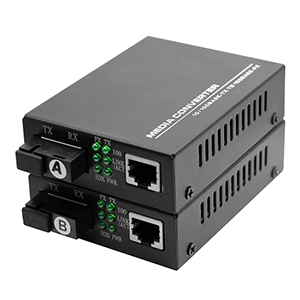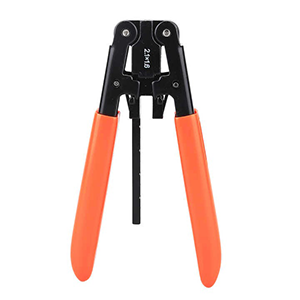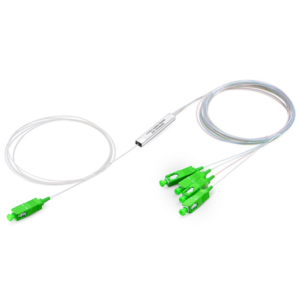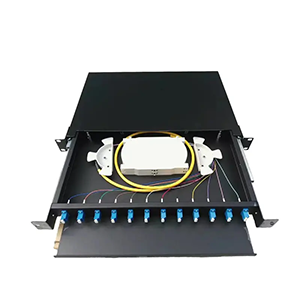Fiber fault diagnosis plays an important role in fiber optic communications. This article will explore the concept and role of fiber optic fault locators. We will first explain the basic functions and application scenarios of fiber optic fault locators, and explain its role in fiber optic testing and maintenance. Next, we will analyze the main features of fiber optic fault locators in depth, including visual fault location, portability and ease of operation, high sensitivity and positioning accuracy, and multi-mode testing functions.
We will explain how these features bring advantages to fiber optic fault diagnosis. Subsequently, we will analyze the typical use scenarios of fiber optic fault locators in applications such as FTTH and 5G, and explain its important role in each application. Finally, we will provide key indicators and selection recommendations to consider when selecting a fiber optic fault locator.
Definition of fiber optic fault locator
Let me introduce you to the basics of fiber optic fault locators:
Definition and function of fiber optic fault locators:
Fiber optic fault locator is a professional instrument used to test and diagnose fault problems in optical fiber networks. It mainly has the following functions:
- Detect whether there are disconnections, bends, joint loss and other faults in the optical fiber line
- Accurately locate the location of the fault and provide distance information from the fault point to the optical fiber end
- Measure the total length, attenuation and other transmission performance parameters of the optical fiber line
These functions enable the optical fiber fault locator to quickly diagnose and locate various fault problems in the optical fiber network.
The role of fiber optic fault locator in fiber optic testing and maintenance:
Fiber optic fault locator plays a key role in the testing and maintenance of fiber optic networks:
- Construction phase: used to detect the quality of newly laid fiber optic lines to ensure the integrity of the link
- Operation and maintenance phase: when a fiber optic fault occurs, the specific location of the fault can be quickly located
- Maintenance optimization: optimize network maintenance strategies by testing and analyzing fiber optic performance indicators
- Performance monitoring: continuously monitor the transmission status of fiber optic links to prevent potential problems in advance
In short, fiber optic fault locator is an indispensable and important tool for fiber optic network testing and maintenance, which can greatly improve the reliability and operation efficiency of fiber optic networks.
Main features of fiber optic fault locator
Let me introduce the main features of fiber optic fault locator to you in detail:
Visual fault location:
- Fiber optic fault locator adopts pulse reflection technology, which can intuitively present the fault location on the display screen
- By analyzing the reflection of light pulses in the optical fiber, the location of the fault point can be accurately located
- The intuitive visual interface greatly improves the efficiency of fault diagnosis and location
Portability and ease of operation:
- Modern fiber optic fault locators are all designed to be small and lightweight, easy to carry and operate
- The equipment is equipped with a user-friendly touch screen operation interface, which is simple and easy to learn
- These features greatly facilitate the daily testing and maintenance work of field engineers
High sensitivity and positioning accuracy:
- The fiber optic fault locator adopts highly sensitive optical pulse detection technology
- It can accurately detect tiny changes in light reflection, and the positioning accuracy can reach within 1 meter
- Excellent measurement performance ensures that faults can be discovered and accurately located in time
Multi-mode test function:
- The fiber optic fault locator supports multiple test modes, including real-time monitoring, event analysis, etc.
- Different modes are suitable for different fault diagnosis needs, such as broken wires, bends, attenuation, etc.
- Rich test functions greatly improve the comprehensiveness and flexibility of fault diagnosis
In general, the fiber optic fault locator plays an indispensable role in the maintenance and optimization of optical fiber networks with its visual positioning, portability, high sensitivity and multi-function.
Typical application scenarios of fiber fault locators
Let me introduce you to the use of fiber fault locators in typical application scenarios:
Fiber to the Home (FTTH) applications:
- FTTH networks widely use PON technology, which requires a large number of fiber lines to be laid
- In the construction and maintenance of FTTH lines, fiber fault locators play a key role
- It can quickly locate the point where fiber faults occur, which is conducive to timely repair and restoration of user services
5G network applications:
- 5G networks have higher requirements for fiber-optic bearer networks and require a large number of fiber links
- Fiber fault locators can help 5G operators quickly discover and locate fiber faults
- This is conducive to ensuring high-speed interconnection of 5G base stations and improving 5G network
Application in enterprise parks:
- Fiber optic networks are widely used to connect various devices and systems within enterprise parks
- Fiber optic fault locators can help IT operation and maintenance personnel diagnose fiber optic problems within the park
- Discover and locate faults in a timely manner to avoid affecting enterprise production and office
Application in telecommunications backbone networks:
- The backbone networks of telecommunications operators use a large amount of long-distance high-speed optical transmission
- Fiber optic fault locators play an important role in maintaining these key backbone links
- Can quickly and accurately locate line faults to ensure the stable operation of the core network
In general, fiber optic fault locators play an irreplaceable role in a wide range of application scenarios such as FTTH, 5G, enterprise parks, and telecommunications backbone networks. It can help all kinds of users quickly find and locate fiber faults, thereby effectively maintaining the reliability and service quality of the fiber network.
Precautions for selecting a fiber fault locator
When selecting a fiber fault locator, you need to consider the following key indicators:
Positioning accuracy:
- Positioning accuracy is the primary indicator for selecting a locator
- Different applications have different requirements for positioning accuracy, and generally a positioning accuracy of less than 1 meter should be selected
- High accuracy is conducive to quickly and accurately locating the fault point
Measurement distance:
- The measurement distance determines the length of the optical fiber line that the locator can diagnose
- Different application scenarios have different requirements for line length
- The appropriate measurement distance range should be selected according to the actual application
Test wavelength:
- Different optical fibers use different working wavelengths, and the locator needs to match the wavelength
- You can choose a single-wavelength or multi-wavelength locator, which is more flexible Suitable for different optical fibers
- Some locators also support automatic wavelength recognition function
Test mode:
- The locator should provide multiple test modes, such as real-time monitoring, event analysis, etc.
- Different fault types require different test modes for diagnosis
- More abundant test functions are conducive to comprehensive and accurate fault location
Portability and operability:
- The locator needs to be tested on-site and should have good portability
- The human-computer interaction interface should be simple and intuitive, so that engineers can quickly get started
- These features are conducive to improving the efficiency of on-site testing and maintenance
According to the specific needs of the actual application scenario, such as network type, fiber length, reliability requirements, etc., select matching positioning accuracy, measurement distance, test wavelength and mode and other indicators to find the most suitable fiber fault locator.
Summary
The fiber fault locator is an important tool for fiber fault diagnosis. Our company has long focused on the research and development and production of optical communication equipment and its supporting products, and has accumulated rich industry experience. We provide high-performance fiber fault locator products. Whether you are in FTTH broadband network, 5G bearer network, or other application scenarios that require fiber fault diagnosis, we can provide you with the most suitable solution.
Our instruments use advanced visualization technology and have excellent sensitivity and positioning accuracy, which can help you diagnose and locate fiber faults efficiently and accurately. At the same time, our team of engineers will provide you with professional selection guidance and usage training to ensure that you can fully utilize the performance advantages of the fiber fault locator. Contact us now to learn more.
Visual Fault Locator FAQ
A Visual Fault Locator is a handheld optical test instrument used to visually identify and locate faults, breaks, or macrobends in fiber optic cables and connections.
A VFL generates a visible light signal, typically a red or visible laser, and injects it into the fiber under test. The light escapes at the point of a fault, making it visible to the user.
VFLs are widely used in the installation, maintenance, and troubleshooting of fiber optic networks, particularly for identifying problems in fiber optic cable runs, splices, and connectors.
Typical features include a compact, handheld design, variable output power, different light source options (e.g., LED, laser), and compatibility with various fiber types and connector styles.
To use a VFL, the user connects it to the fiber under test, activates the light source, and visually inspects the fiber path to identify the location of the fault where the light is escaping.
Key advantages include the ability to quickly and easily identify fiber faults, the non-destructive nature of the testing, and the portability and ease of use of VFL instruments.
VFLs are primarily used for identifying macrobends and visible defects, and may not be effective in detecting microbends or other types of faults that do not cause light to escape the fiber.
Users must be trained to correctly interpret the visible light patterns and understand the relationship between the fault location and the observed light emission.
VFLs emit visible laser light, which can be harmful to the eyes, so proper safety precautions, such as the use of protective eyewear, must be taken when operating these instruments.
Ongoing advancements include the integration of VFL functionality with other fiber optic test equipment, as well as the development of more advanced, multi-function VFL instruments.





